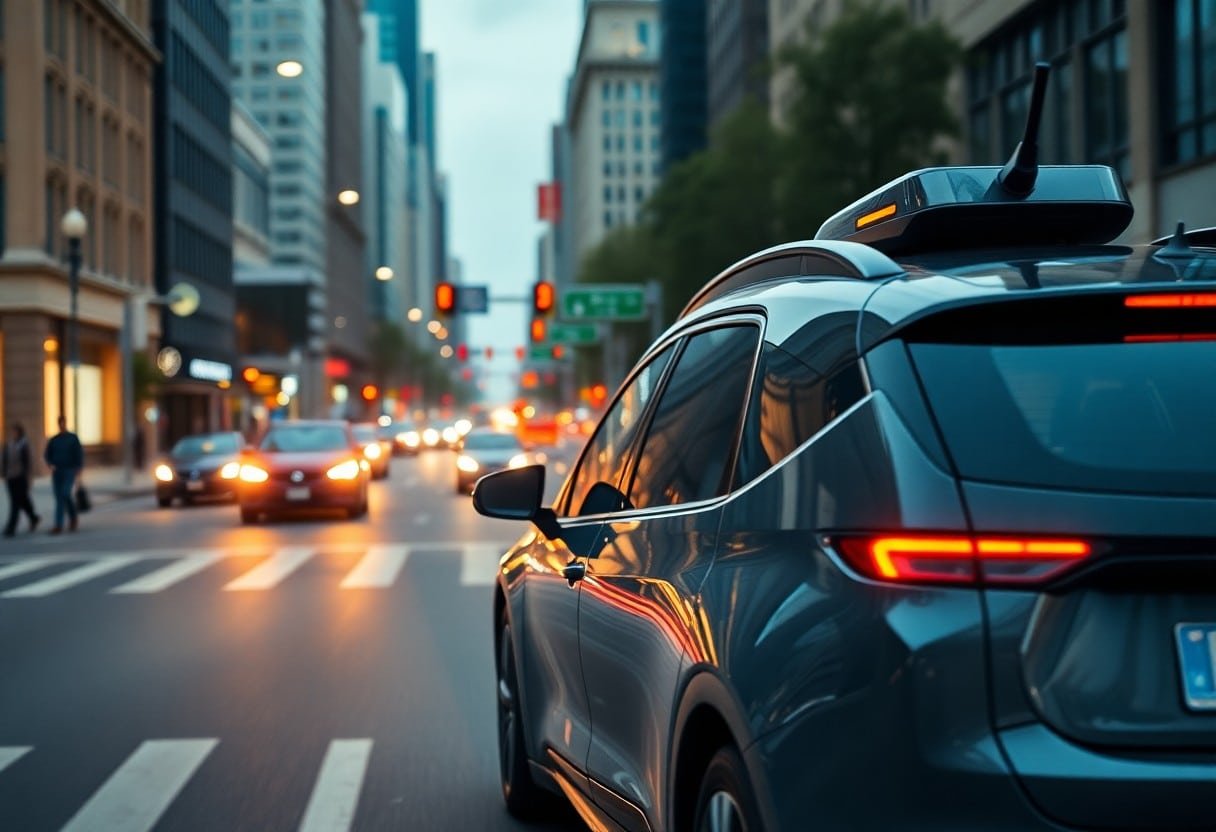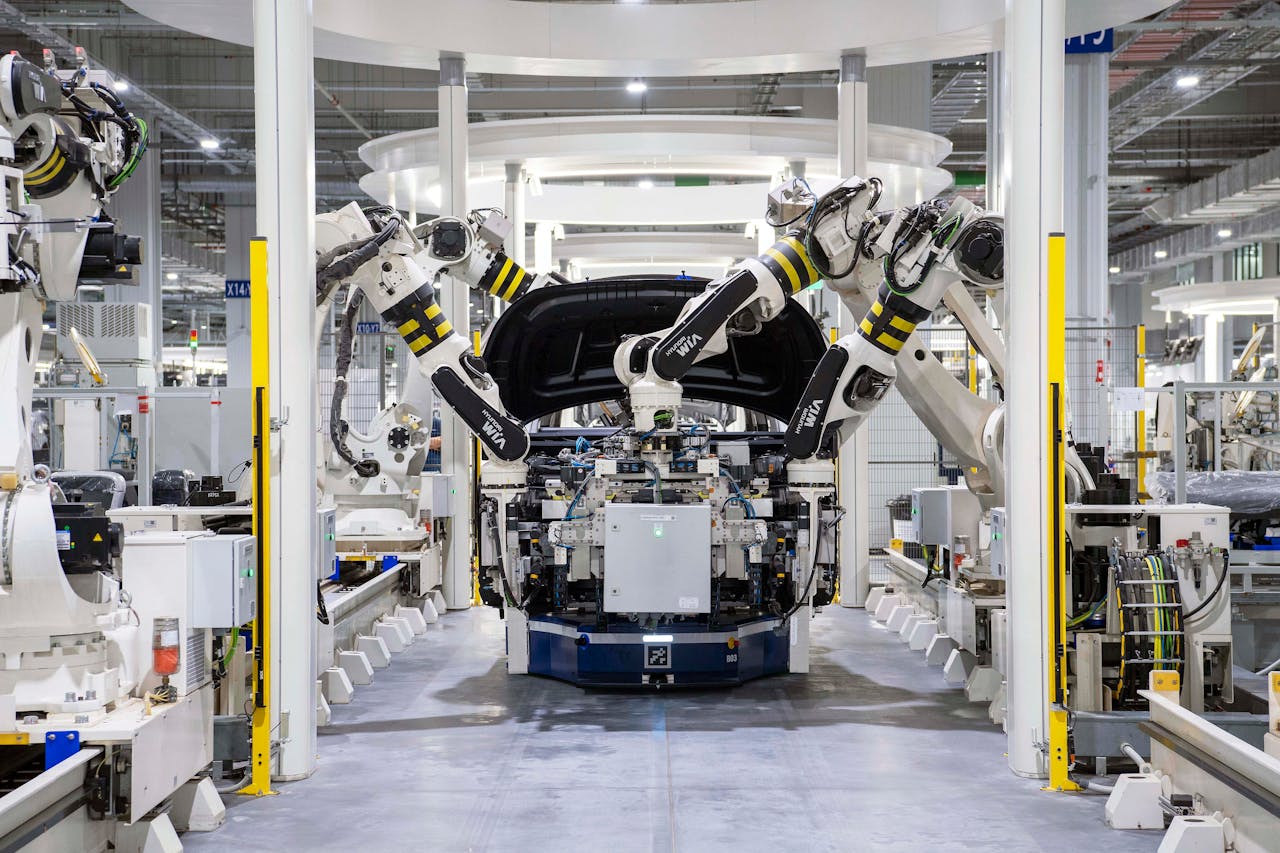Machine learning is revolutionizing the automotive industry, and you may wonder how it can elevate Advanced Driver-Assistance Systems (ADAS) to full autonomous driving technology. As you explore this potential transformation, consider how innovations in machine learning enhance safety and efficiency on the road. Find out more about How Machine Learning Is Used In Autonomous Vehicles and unlock the future of driving.
Key Takeaways:
- Machine learning enhances perception and decision-making in ADAS, paving the way for more advanced autonomous systems.
- Integration of real-time data analysis allows for adaptive responses to dynamic driving environments, improving safety and reliability.
- Collaboration between AI technologies and automotive engineering is important for overcoming technical challenges and regulatory hurdles in transitioning to fully autonomous driving.

The Driving Force: How Machine Learning Elevates ADAS
Machine learning serves as the backbone of Advanced Driver Assistance Systems (ADAS), enabling vehicles to learn from vast amounts of data and enhance their operational capabilities. Through advanced algorithms, your vehicle can adapt to diverse driving conditions, improving safety and efficiency. This technology empowers features like adaptive cruise control and lane-keeping assistance, paving the way for more sophisticated, fully autonomous capabilities.
The Role of Data in Vehicle Intelligence
Your vehicle’s intelligence is significantly shaped by data collection and analysis. Each second, sensors gather information about traffic, road conditions, and driver behavior, feeding machine learning models that refine performance. This continuous learning process transparently integrates real-world scenarios, allowing your vehicle to make informed decisions and respond proactively to potential hazards.
Bridging the Gap: From Advanced Driver Assistance Systems to Autonomy
Transitioning from ADAS to full autonomy involves refining the systems that govern vehicle behavior and decision-making. While ADAS enhances your driving experience through automated support, the next step is achieving a level of automation that reduces human intervention. This evolution relies on sophisticated machine learning models capable of processing and interpreting complex data in real-time.
- Enhanced validation techniques.
- Improved integration of data sources.
- Development of more reliable algorithms.
- Utilization of simulation environments for training.
- Increased focus on safety regulations and standards.
| Key Concepts | Description |
|---|---|
| Data Fusion | Combining data from multiple sensors for improved accuracy. |
| Predictive Analytics | Using historical data to forecast potential driving scenarios. |
| Real-Time Processing | Instantaneous analysis of data to inform vehicle decisions. |
| Human-Machine Interaction | Creating intuitive interfaces for driver interaction and feedback. |
| Ethical Considerations | Addressing moral dilemmas in automated decision-making. |
Advancing from ADAS to autonomous driving requires a multifaceted approach that combines technology, safety measures, and thorough testing. Your vehicle must master not only navigation but also the ability to predict and react to unpredictable elements on the road. Achieving full autonomy involves establishing a robust framework of regulations, innovative algorithms, and a well-coordinated integration of data that allows for informed, responsible driving decisions.
- Investment in R&D for future capabilities.
- Collaboration between automakers and tech companies.
- Focus on user experience and safety improvements.
- Regulatory adaptations for new technology.
- Public acceptance and education initiatives.

Unpacking the Algorithms: The Core Machine Learning Technologies
Machine learning algorithms form the bedrock of transforming ADAS into full autonomous driving systems. These algorithms analyze vast amounts of data, improving decision-making capabilities and safety. Key technologies include supervised and unsupervised learning, reinforcement learning, and neural networks, each contributing to the system’s ability to adapt and evolve. As these algorithms refine themselves with continuous input, they enhance your vehicle’s perception and understanding of its surroundings.
Deep Learning and Neural Networks in Real-Time Decision Making
Deep learning leverages neural networks to process complex inputs like images and sensor data, enabling your vehicle to make real-time decisions. For instance, convolutional neural networks (CNNs) excel in identifying objects and distinguishing between pedestrians and other vehicles. This capability ensures that your car can navigate safely and efficiently while responding to dynamic environments and unexpected events.
Computer Vision: How Cars See and Understand the World
Computer vision allows vehicles to interpret their surroundings by analyzing data from cameras and sensors. It transforms visual inputs into actionable insights, such as detecting road signs, lane markings, and obstacles. Sophisticated algorithms classify and track these elements, providing situational awareness crucial for safe driving.
Computer vision systems employ advanced techniques such as image segmentation and optical flow analysis to enhance the vehicle’s understanding of its environment. By detecting and classifying objects, these systems contribute significantly to your car’s ability to make informed decisions. For example, research shows that combining computer vision with LiDAR data increases object recognition accuracy by over 90%. This high level of awareness enables safer navigation through complex landscapes and promotes confident driving in various conditions.
Safety First: Overcoming Challenges in Autonomous Tech
Overcoming the safety challenges in autonomous driving technology demands rigorous testing and real-time data analysis. As you advance towards full autonomy, addressing potential system failures and ensuring safe interactions with human drivers and pedestrians is paramount. Techniques like simulation environments and closed-course testing are vital, yielding insights that enhance the reliability of autonomous systems under various conditions.
Navigating Ethical Dilemmas in AI Decision Making
AI decision-making in self-driving cars poses complex ethical dilemmas, especially in critical situations where harm is unavoidable. You may grapple with questions on what an AI should prioritize—preserving driver safety, passenger safety, or minimizing overall damage. Establishing clear ethical guidelines and transparent algorithms is vital for building public trust and ensuring responsible use of technology in real-world scenarios.
Regulatory Hurdles: The Roadblocks to Full Autonomy
Regulatory hurdles significantly hinder the path to full autonomy in vehicles. You encounter a patchwork of laws varying by region, which can complicate the deployment of autonomous systems. Compliance with safety standards, liability laws, and data privacy regulations requires ongoing dialogue among industry stakeholders, lawmakers, and regulators to foster an environment conducive to innovation.
Addressing regulatory hurdles involves a collaborative effort between manufacturers, policymakers, and research institutions. You may witness efforts like the Society of Automotive Engineers (SAE) establishing a framework for autonomy levels, helping regulators better understand technological capabilities. Furthermore, pilot programs in select areas can demonstrate safety and efficacy, building a case for broader legislative changes that support the rollout of autonomous technologies. Engaging in these discussions is vital for shaping a legislative landscape that not only encourages innovation but also maintains public safety.
A Glimpse into the Future: Predictions for Autonomous Driving
Advancements in machine learning promise to revolutionize autonomous driving, with predictions of fully autonomous vehicles becoming mainstream by the late 2030s. As technology evolves, improved perception systems, enhanced decision-making algorithms, and more robust predictive models will enable vehicles to navigate complex environments safely and efficiently. This transformation isn’t just about automation but creating a seamless integration of vehicles into everyday life, enhancing mobility, reducing accidents, and changing urban infrastructure fundamentally.
Industry Experts Weigh In: What’s Next for Machine Learning in Automotive
Experts predict that machine learning will refine vehicle interactions with their surroundings, driving further innovations in real-time data processing and sensor fusion. You can expect vehicles to utilize advanced neural networks designed to learn from diverse scenarios, ultimately creating safer driving experiences. Industry leaders emphasize collaborations between tech firms and car manufacturers will accelerate the development of autonomous solutions, pushing the boundaries of what’s possible in automotive technology.
Consumer Perspectives: Will Society Embrace Full Automation?
Consumer acceptance of full automation hinges on trust, safety, and the perceived value of self-driving technology. Your concerns regarding liability, security, and job displacement will shape the adoption landscape. Insights suggest a gradual transition, with consumers more favorable toward partial automation features before fully embracing autonomous vehicles.
The hesitation among consumers stems from various factors, including high-profile accidents involving autonomous vehicles and the unfamiliarity with relinquishing control. Polls indicate that while many people express interest in self-driving cars, significant percentages remain skeptical about safety and reliability. To build trust, manufacturers will need to demonstrate consistent performance in diverse conditions. Assuring consumers of the technology’s efficacy could lead to broader acceptance, possibly even evolving societal norms around vehicle ownership and transportation.
The Role of Collaboration: Partnerships in Innovation
Collaboration between automakers and technology firms is pivotal in advancing autonomous driving technology. You’ll find that partnerships foster innovation, enabling the exchange of expertise and resources crucial for developing advanced driver-assistance systems. By joining forces, companies can leverage their strengths, streamline processes, and expedite the integration of Machine Learning – Powering the Autonomous Driving … technologies into vehicles.
Automakers and Tech Giants: A New Paradigm in Development
Enterprises like Tesla, Google, and traditional automakers are redefining the landscape of automotive technology through strategic alliances. By merging automotive engineering with cutting-edge tech, you see a more holistic approach that accelerates the development of self-driving capabilities. This melding of expertise not only optimizes product offerings but also enhances safety and efficiency on the roads.
The Importance of Open Data Sharing for Progress
Open data sharing amongst industry stakeholders catalyzes rapid advancements in autonomous technologies. You benefit from real-time insights shared across platforms, enhancing machine learning algorithms that drive better decision-making in vehicles. Shared datasets allow for widespread training opportunities, leading to improved accuracy in perception and navigation systems.
With open data, a rich tapestry of information becomes accessible, increasing the diversity of scenarios your vehicle can learn from. For instance, autonomous systems can utilize shared data from various environments, improving their adaptability. This collective intelligence decreases development times while enhancing safety, ultimately making autonomous driving solutions more reliable and robust across different conditions. Collaborations focusing on open data facilitate a more innovative and efficient pathway towards fully autonomous systems.
Summing up
The advancements in machine learning within automotive systems have the potential to significantly elevate Advanced Driver Assistance Systems (ADAS) towards achieving full autonomous driving technology. As you explore these innovations, you’ll see how AI can enhance safety, efficiency, and overall driving experience. Staying informed about these developments will empower your understanding of the future of transportation. For more insights into this transformative journey, check out Driving the Future: Integrating AI and Machine Learning ….



